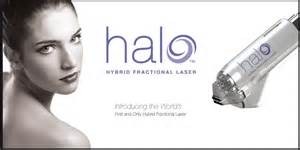The introduction of CO2 lasers in the mid-1990s largely replaced the traditional of chemical peels like TCA and phenol. They initially created a deep resurfacing effect and were associated with a hypopigmentation effect in some patients and a prolonged recovery. Modern day skin resurfacing laser have gotten around these issues through the use of pulsed and scanning technology as well as the use of ‘lighter’ power sources than CO2. (Er:Yag) This Erbium technology allows for better control of the laser energy with improved results and less downtime and risk of complications.
Fractional laser resurfacing is the gold standard of facial laser treatments today. By treating just a fraction of the facial skin’s surface, recovery is very quick and the risk of complications is virtually eliminated. But it does require more laser treatments to achieve the final resurfacing result. Combining full coverage ablative resurfacing in conjunction with a fractional treatment simultaneously removes a thin layer of epithelium as well as cuts/removes small vertical columns of epithelium and dermis which leads to tissue remodeling. But recovery is often not as quick as the patient would like and multiple treatments are still needed.

The Sciton HALO device has undergone years of testing to perfect the Hybrid Fractional Laser technology. During this testing it was discovered that patients treated with the HALO had a much better skin texture and pigment improvement than expected. These results were obtained in just one to two treatments compared with four to six treatments with older non-hybrid lasers. In addition pore size and number had unexpected improvements not seen before.

Dr. Barry Eppley
Indianapolis, Indiana


